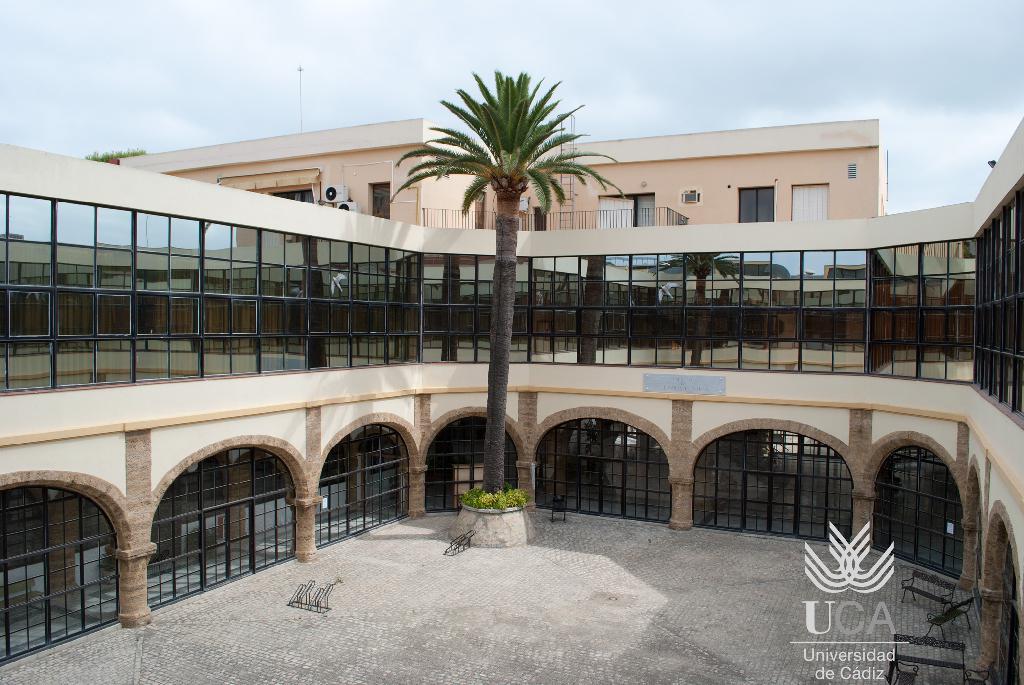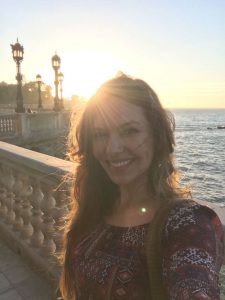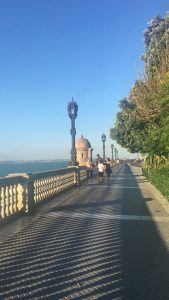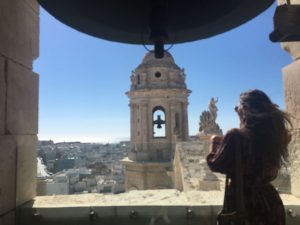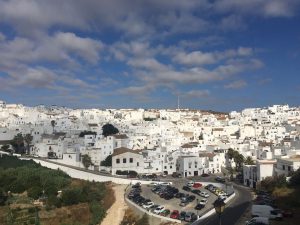My experience in Cádiz has been a truly adventure, I am taking two classes in Spain, they are a methodology class in Spanish called “Nivel Superior” and a “History of Contemporary Spain” class. These two classes are responsible in making me quite busy during my time in Cádiz, I must admit. I really like the two of them, however it is my first time taking a methodology class, it is a very exciting and diverse class, for example we have students from Cádiz, San Fernando, Chiclana but we also have from Russia, Italy, and Germany and of course me from the Dominican Republic. This course is taught in Spanish and is called “ Curso de Formación Práctica para Profesores de E/LE , Nivel Superior”. It essentially translates as a practical formation to teach Spanish as a foreign language, for superior levels. I love this class because I have classmates that have 25 years of teaching experience, others who have traveled outside Spain to teach Spanish, and others like myself who just finished their undergraduate degree and are starting or about to start their master’s program.
So far, in this course we have worked in groups and have created different activities including a plan of study for an indicated level of Spanish to teach. For example, my group and I chose to create a plan of study for a B1 course which is the equivalent to a 300 level Spanish course in the U.S. My group and I focused in the imperfect and imperative and used it as main topic of our unit, I was not able to present along with my group because I had a program excursion to Tarifa, Vejez, and Bolonia, but at least I contributed to the creation of the plan. We all agreed to keep the unit very interactive, since learning another language can be sometimes frustrating we made sure to pick activities that were both instructive and fun.
Since this project, we had to adapt a text to different levels of Spanish classes, for example I learned how to adapt the same text to a B1 level to a A1 or A2 level. It goes as following: level A1 is the elementary, A2 the basic, B1 is the intermediate, B2 the advance, C1 the superior, C2 is the level where we help polish everything the student has acquired. For our last two project, we have to read the material and for this coming Monday, perform an oral evaluation to actual students at the school, I am looking forward to this activity since last time I was in a similar position was two years ago in 2015, when I worked as a Spanish teaching assistant for the MIT/Wellesley Upward Bound Program.
Lastly, for our final project we need to work in groups and create and design a hypothetical exam we would give to a Spanish as a Foreign Language class. This, is both challenging and interestingly fun to do, because as teachers we would have to keep in mind how to stay in balance for our students, we would not want to make the exam too easy or too hard. Because ultimately, we want our students to learn Spanish and not intimidate them or make them feel inferior. I trust we would make a great final project and of course do very well presenting our final product to the class!
Overall, I have learned so much! In class and my teachers are amazing, both Foncu and Macarena are great teachers, today I learned that Foncu and I have the same favorite author, Eduardo Galeano. He informed us that next week there will be an homenaje to Galeano at the Café Teatro Pay Pay, which I definitely plan on going!!!
I am glad I came to Cádiz; the experience has been extraordinary! Because “One’s destination is never a place, but a new way of seeing things.” – Henry Miller
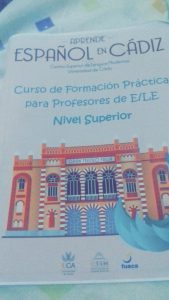
The book for our class, where we extract many of the material along with class discussion and other suplemental materials
- Where my classmates and I discuss class debates, prepare for class and talk about a variety of other topics over a nice cup of Café.

